No one was around when I shoved off the dock in my wherry, and I was glad of it: the current from the tannin-stained water of Florida’s Carrabelle River pushed the boat back into the dock before I shipped the second oar. On the second attempt, I narrowly escaped the dock’s ragged, rusty metal corner and luckily got turned into the current with both oars in the water.
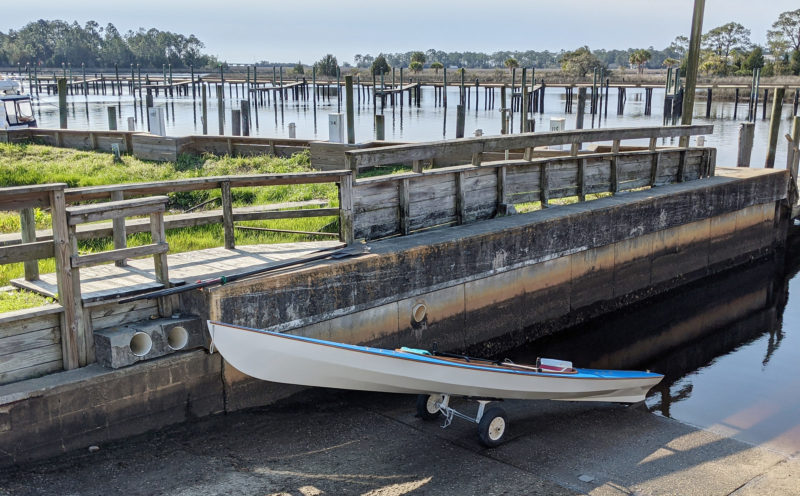 Photographs by the author
Photographs by the authorThe boat is packed and ready to go at a ramp on the left bank of the Carrabelle River. It’s February and the marina is largely deserted.
The banks of the river were lined with wooden docks set parallel to the shore, like sidewalks along a street, with boats moored with their sterns to the docks. The small town of Carrabelle, with its low buildings and tree-lined streets, was in full view on my port side. Across the river was the wooded shore of Timber Island.
In 2014, as I was building my boat, an Expedition Wherry from Chesapeake Light Craft, I envisioned tucking my camping gear under the hatches and taking it cruising. For the boat’s first seven years, I rowed many places but always as day trips. This time, leaving Carrabelle, I had my tent, sleeping bag and pad, food, five gallons of water, and a five-gallon bucket full of oak firewood.
The heavily laden boat took longer to get to speed, but the dark current was pushing me along—I had lucked out and had an outgoing tide, which made for a quick row downriver. The channel buoys leaned away from the current and water mounded against the pilings alongshore. As I rowed, the sliding seat whispered, eddies spun from the tips of the oar blades, and the bright rays of February sunshine warmed my back; it felt good to be on the water. The river narrowed and the outboard skiffs slowed well before they passed me. I stayed out of the channel as much as possible and hugged the white sandbanks of the low-lying dredge-spoil islands at the mouth of the river.
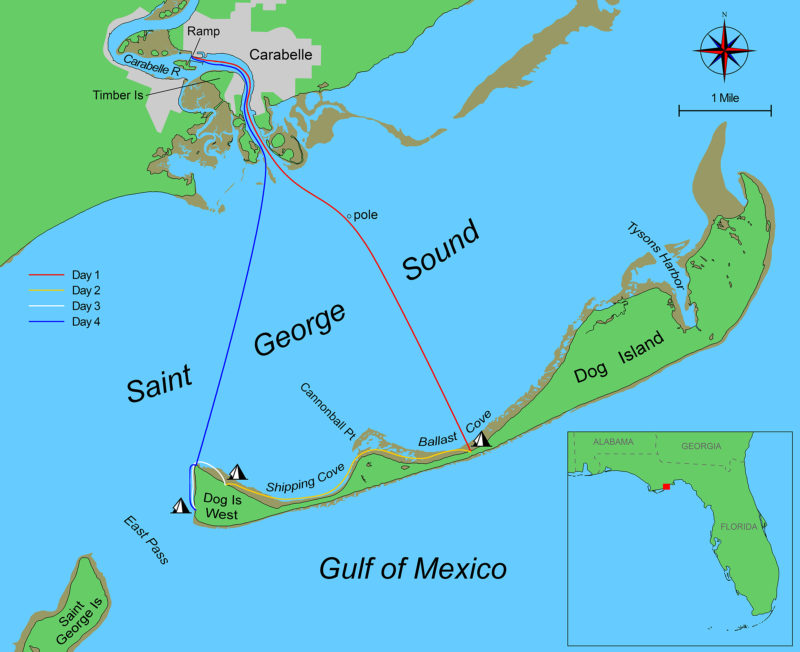 Roger Siebert
Roger Siebert.
The open water of St. George Sound lay ahead, and I rowed out of the calm of the river into 12 to 16 knots of wind from the east. The bow started tossing a bit of spray and the boat moved around under me as if brought to life. To the southeast, 3-3/4 miles across the sound, Dog Island was a thin line on the Gulf of Mexico’s sharp-edged horizon. Dog Island and St. George Island farther south are two barrier islands nestled in the crook of the Florida Panhandle. Both had many options for camping and, once I reached them, I could plan the days as they arose according to the weather and my energy. I took off my hat and secured it to a line and put on my rain jacket. I checked to make sure my cellphone with a navigation app was secured in its waterproof case and tethered to the boat. I set a course for Dog Island, checked the compass bearing, tugged on the straps to tighten my PFD, and dug the oars in.
A dredged channel runs directly from the mouth of the river to East Pass, the 1-¼-mile-wide gap between Dog and St. George islands. I rowed clear of the channel markers to stay out of the way of other boats and settled into a steady pace. I quartered into the waves and wind, staying a little more upwind than I had intended to counteract the sideways force of the wind and waves. Waves pushed the bow around and I felt the wherry skitter under me. Once in a while, the bow would slap and spray splattered the back of my rain jacket and hood. The occasional spray didn’t feel cold yet; I still felt the warmth of the sun on my legs and jacket. I checked the sky and saw some high wispy clouds.
I had settled into a steady rhythm of oars, seat, and boat until, wham! In an instant, the boat slewed to port with a screech of metal, and a shudder of the rowing frame. An electric surge of adrenaline flushed through me as the boat came to an abrupt stop. What the…? A barnacle-encrusted post the size of a telephone pole loomed over me within an arm’s length. I knew that I was outside the clear passage assured by the dredged channel, but I didn’t expect this lone, unmarked and isolated navigation pole in the middle of open water, let alone to hit it with the outer 2″ of the port outrigger with the full force of a heavily laden boat.
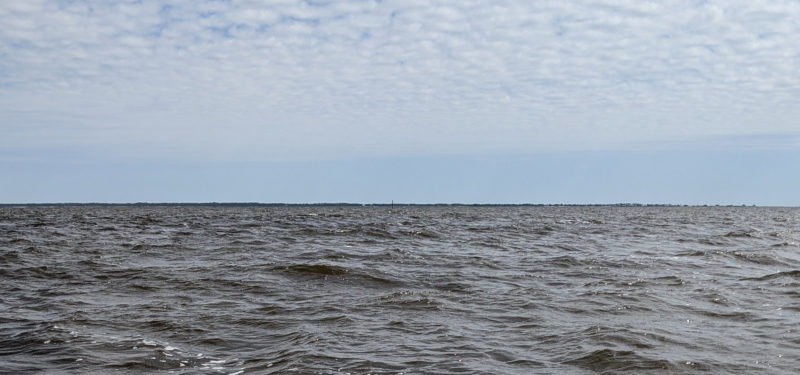
Just barely visible in the center of the photo is the post I ran into. After the collision, I lost ground as the easterly pushed me back toward the mainland. Dog Island, my destination, hugs the horizon in the distance.
The 15-knot breeze and the 1′ to 2′ waves pushed me away from the post; the outrigger had left its mark, a swath of crushed barnacles with white bits of broken shell in a yellow smear of eggy innards. I craned around in the seat and scanned for damage. The boat was unscathed and the port oar and oarlock still seemed solid, but the outrigger’s stay was bowed up and the outrigger wing was bent back. With the oar blades in the water the boat was stable in the waves and chop, and I took a quick look around to make sure I was out of the way of other boats and wouldn’t get run over (and hoped that no one saw me row straight into a post). That was all to the good; the bad news was that I couldn’t swing the oar handle aft past the bent backstay and get the blade in the water at the catch. Using the Allen wrench that stays in a holder on the rowing rig, I reached out over the water to unbolt the stay. Waves dipped the whole operation—hands, wrench, bolt, and nut—under water but I removed the strut without losing anything. I tucked the oar handles under my knees to keep the boat stable and searched for a way to pry the backstay straight in the sturdiest parts of the rowing rig. I managed to reduce the bend by half and reinstalled it. I bailed the cockpit—the waves and chop had slopped a couple of gallons aboard—released the oar handles from my knees and began rowing. My repair had worked, and I avoided having to go home to explain a one-hour expedition.
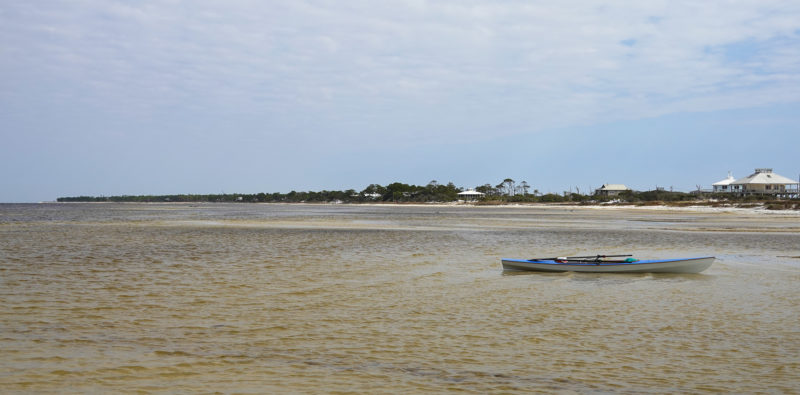
I reached the sandy shallows of Dog Island under a bit of blue sky and waded the boat around sandbars to get a couple of hundred yards west, away from the last of the houses on the eastern part of the island.
I tried to breathe again and rowed. The weather conditions and the bent stay made the rowing unpleasant, but I’ve been in much worse and I felt safe. I managed to get in a rhythm and sustain it even while I looked over the bow—frequently. The low profile of Dog Island started to look closer than the mainland, and I soon entered its lee and slipped out of the worst of the waves and wind. Ninety minutes and about 4 miles from Carrabelle, I wandered through some shallow areas against the island, hopped out of the cockpit, and pulled the boat up on a sandbar 10 yards off the shoreline, a gentle slope washed smooth by the waves leading up to dunes just a few feet high.

Power lines and poles run down the middle of the Dog Island, a half-mile long isthmus connecting the east end and the middle of the island. The open Gulf of Mexico is less than 100 yards away on the other side of the dune-like neck of land. The water in the lee, on the bay side of the island, was merely scuffed while spume was blowing off the waves on the Gulf side.
The sun was shining through a thin translucent veil of high clouds and the lee made a pleasant relief from the wind. I wandered to the deserted beach at Ballast Cove on the sound side of the 6/10-mile length of the ruler-straight sandy isthmus connecting the northeast and central parts of Dog Island. Sand dunes undulated across the island, rippled like wind waves on ocean swells, dotted with tufts of beach grass and low shrubs with webs of crooked stems. In the distance, scattered both east and west, a dozen or so houses stood on stilts. Two utility lines running the length of the island hung in long parallel curves, one above the other from poles without crossarms.
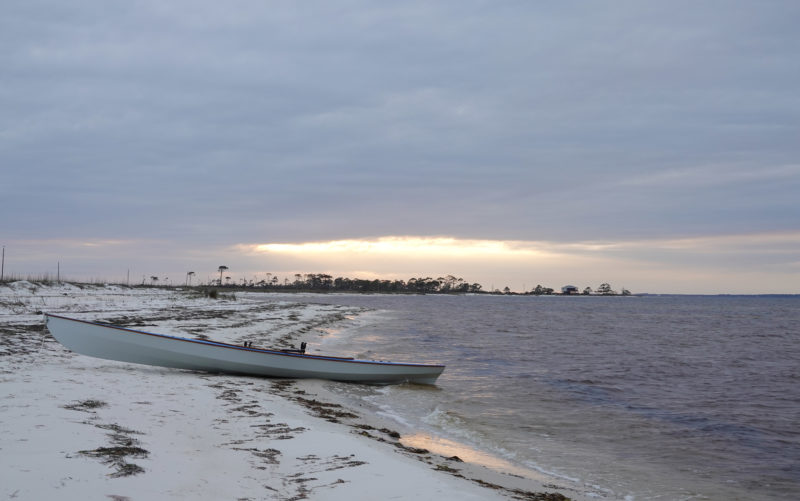
The tides were negligible, just inches between the high and low; tethered by the painter, the boat is set for the night at the water’s edge. Cannonball Point lies at the far end of Ballast Cove and the clouds are rolling in, ready to unleash a torrent of rain.
Whitecaps out in the sound coupled with plenty of potential tent sites convinced me that the 5-mile row for the day was good enough. I waded in cool, but not cold, knee-deep water along the shoreline, coaxing the boat down the beach around shallows and sandbars. About 100 yards from where I’d landed, I slid the boat out of the water on the shore’s white sand and planted my small anchor 50′ up the beach for a little insurance. I made camp in the lee of a chest-high dune and hauled my gear from the boat to the tent.
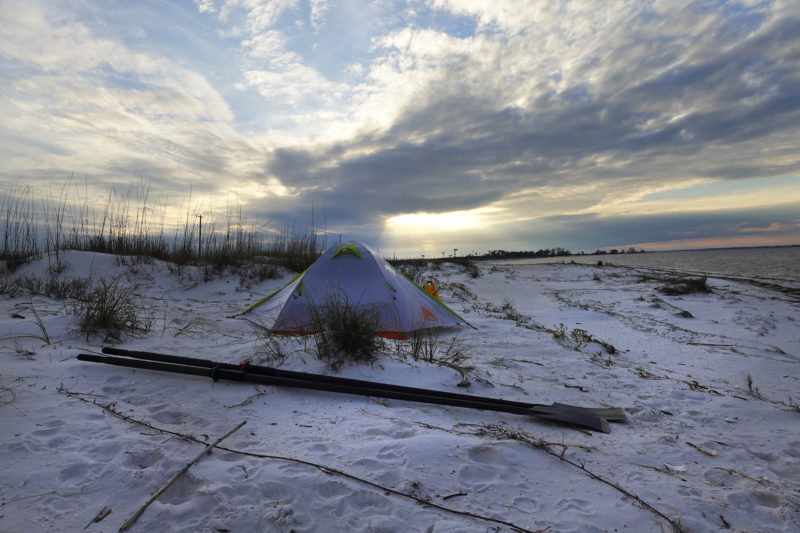
As the sun set on my first campsite, the wind was blowing from the southeast, but my tent was in the lee, sheltered by the dunes.
I walked across the island. It was only 110 yards to the gulf side—I counted my steps. Halfway across, the wind picked up and whipped the scattered dry grasses back and forth. Dry sand skittered back and forth on the sandy surface in no apparent direction. A broken stalk of dry grass was blown back, forth, and around making a perfect circle in the dry sand.
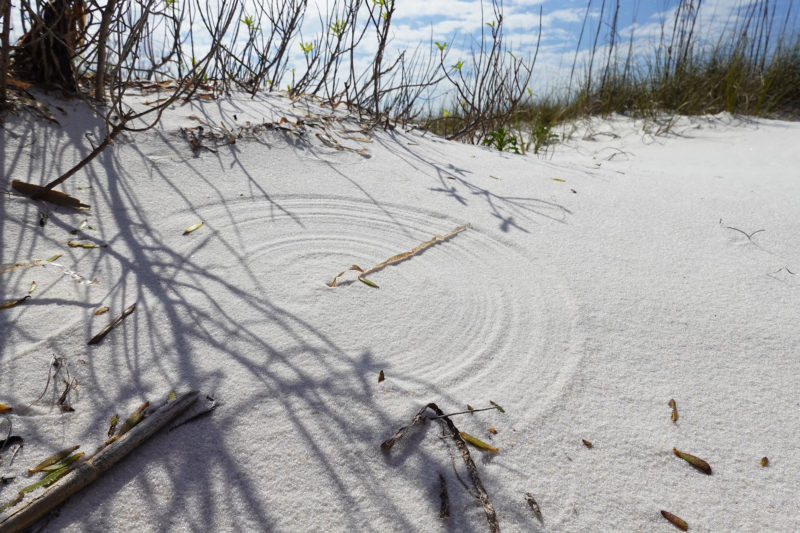
On my first walk across the island, I found this pattern of concentric circles traced in the powdery sand by a wind-whipped blade of dried grass.
My bare feet sank in the dry powdery sand. After the repetitive and restricted movement of the rowing rig, my legs enjoyed the freedom of wandering the dunes. The oceanside beach was steep, by Florida standards, where the highest point of land in the whole state is 345′. I was glad to still be wearing my rain jacket, which had blown flat against my chest. The surf was studded with foamy whitecaps and the wind was pushing the blue-green waves as high as 5′. A half-dozen light gray birds with black heads huddled behind quivering tufts of grass to find refuge from the wind, though their feathers ruffled in the gusts. Although I could see perhaps a dozen houses 200 yards away, there was not a person in sight. High clouds gathered and pushed across what was left of the pale yellow sunlight as the afternoon grew late. The warm pinks of sunset cast a faint glow through the thickening clouds. As the sky faded to gray, I put on a fleece shirt under my rain jacket, built a small campfire in the sand with the oak firewood I’d brought, and watched the night close in around me.
Through the long night, the wind carried the sound of the surf crashing on the ocean shore across the island; wind whipped the tent’s rain fly and a steady rain pounded on it. The noise kept me company in a wild kind of way. Worried about the boat, I checked it during the night by unzipping the rain fly and shining the flashlight through the midnight murk and falling drizzle. I didn’t get much sleep, but at least the tent didn’t make matters worse by leaking.
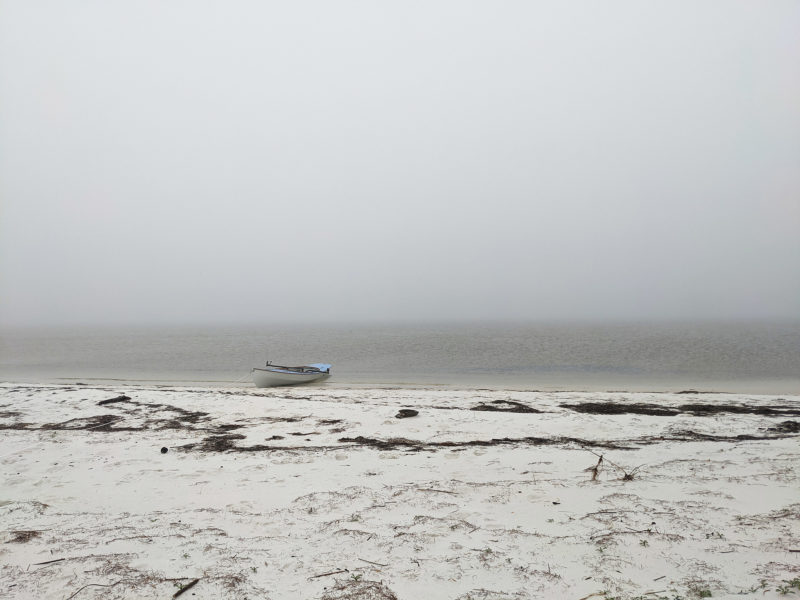
In the morning, the rain let up, but the fog rolled in. The wind had made for a rough night, and my mind was as gauzy as the bay.
At dawn, the rain diminished enough for me to reach out of the tent to boil water for coffee and a bowl of oatmeal. The wind had dropped to 10 to 15 knots, with the boat and me in the lee. The crash of heavy surf on the other side of the island still filled the air. I could barely see the boat, even though it was just 50′ away, and St. George Sound was lost in an opaque and seemingly infinite fog. I wasn’t interested in rowing blind and navigating with a compass, so I waited to see if it would lift.
With a liter of water and a couple of protein bars in my pockets, I set off on foot to explore the west end of the island. I had on my fleece pants, a couple of shirts, a rain jacket, and bare feet. On the gulf side, with a stiff wind behind me, the waves tumbled, roaring, on the beach and the wind rattled the hood around my face. I didn’t see any sign of another person anywhere, and there were no footprints in the sand other than mine and those left by a skittish flock of sandpipers. After I had walked about a half hour, the island widened a bit, bulging out 1/3 mile from the straight Gulf of Mexico shore to Cannonball Point, and then narrowed even further into another isthmus that separated the gulf from Shipping Cove with a 100-yard-wide strip of sand. I passed two houses set on 10′-tall pilings above the isthmus’s beach sand that stretched uninterrupted between the gulf and the sound. The island widened to the northwest again, forming Dog Island West, which curls to the north pointing back at St. George Sound and the mainland. As I turned the corner where the Gulf shore meets the shore bordering East Pass, gulls and pelicans were huddled in the lee of the blunt, 1/2-mile-wide wedge of sand dunes and brush that makes up the far west end of the island. I knew that St. George Island was somewhere in the distance to the west, just over a mile away, but I couldn’t see it through the fog.
Protected from the wind a bit, I warmed up as I headed north and continued around the western end of the island and back to the Shipping Cove side. The sky cleared a little to reveal the cloud-masked disc of the rising sun a third of the way up in the sky. But an hour later, as I was getting close to the campsite, the clouds turned slate gray and the pitter-patter of rain started. Raindrops dotted the sand and disappeared. I picked up the pace and arrived at my campsite with just enough time to organize lunch and dinner and stow my gear as best I could before the rain threatened to soak everything. As the rain fell harder, I gathered the drybags that had what I might need and retreated to the tent. It was 1:22 p.m. Fortunately, I had loaded six library books on my Kindle before leaving home, and with the wind whipping the surf into froth, and the rain drumming on the tent, it was looking like I might need more than one book to pass the time ashore. I started reading Jack, a novel about a tormented romance in a fictional Iowan town.
Overnight, the wind clocked 180 degrees, and my tent was out of the lee and in the northwesterly’s teeth. I had pulled the boat well up above high-tide line, so I worried less about it, but the wind howled across the island and the waves battered the shore. With every gust, the tent flapped, shuddered, and shook. The rain drummed on the rain fly. I spent another restless night, but I was dry and warm and the boat stayed where I had put it.
Friday dawned windy under a cloudy, drizzling sky. The wind persisted but the rain was letting up. I read more of the book, which transported me to join a tormented Jack and his girlfriend trapped in a cemetery. Their escape was going to be long in coming, so I returned to my own confinement and made coffee. Visibility across the St. George Sound was poor, and the wind was onshore and above 15 knots.
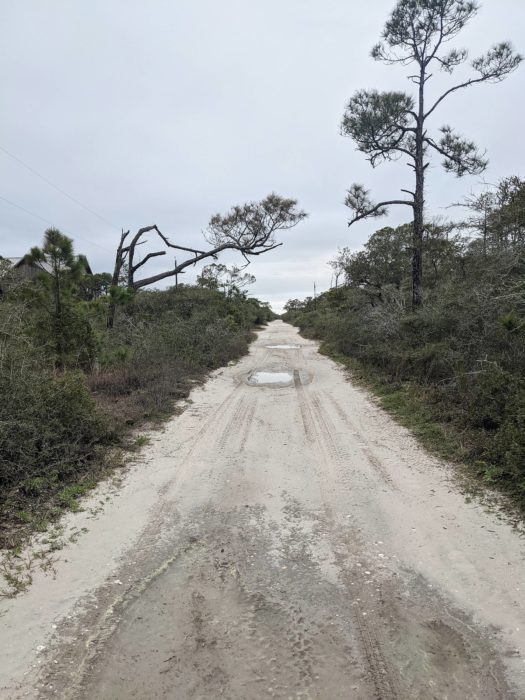
I walked east along the main road to the island’s transportation hub, a wooden ferry dock and a row of old cars parked on the sand in the midst of pines and stunted oak.
There would be no boating, so I got ready to spend the day on the island. I decided to walk Dog in the other direction. I headed northeast along a road of packed sand and broken seashells. This largest part of the island was a mix of wetlands and patchy forests of scrub oak and pines. Hills lumped up out of the sand. The houses were set back from the road to be close to the beach on the southeasterly side of the island. While none appeared to be occupied, most of them were neatly maintained. One house appeared to be little more than a pile of boards and old house fixtures pieced together on a plot with a view of the gulf. The sand track wended inland where several other sand roads converged.
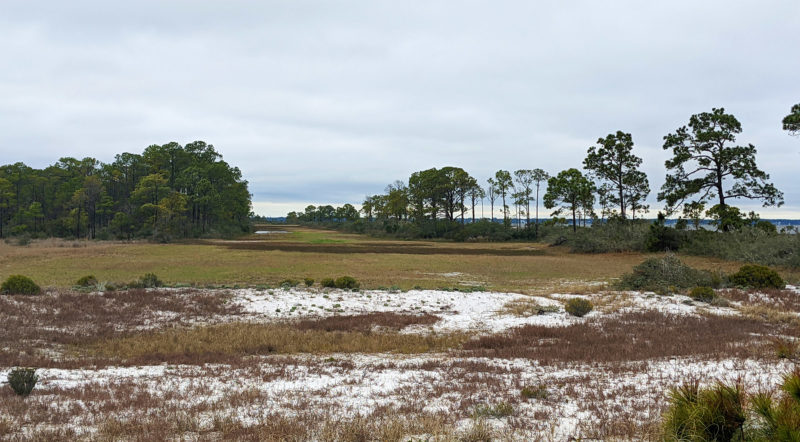
The clearing in the woods is not a meadow but an airport. The grassy landing strip looked a little rough to me, but it only costs $10 to land here; $15 if you want to stay overnight.
I followed the widest track and passed a stretch where cars and trucks flanked the road leading past a garbage station and the entrance to the nearby Nils Pehrson Airport with its 1/2-mile-long landing strip of grass and sand to the ferry dock and the docks of the Dog Island Yacht Club. It was clearly the hub of the island but the only people I saw were a couple, at a distance, boarding their boat and heading north out of Tysons Harbor, the ¼-mile-wide notch that cut almost all the way through the largest part the island.
On the walk back to camp, a rusting 20-year-old Ford truck passed me, and the driver stuck his hand in the air for a wave. In the 6 miles that I walked, he was the only person I saw on the road.
When I reached camp, the northeast wind was still blowing over 15 knots. Grasses bent in the wind and the surf was pounding the sand, sending spray flying. My tent lurched away from the gusts. The sun was a circle of dusty white in an overcast sky but cast no shadows. The visibility was at least a mile, and I felt antsy. I struck camp with the thought of moving toward the southwest end of the island and finding a less windy place to camp. I took my time and packed carefully, balancing the boat with the load and launched without getting too wet. Only a few strokes into the sound, a wave sluiced over the whole boat and dumped 6″ of water into the cockpit. I stopped to bail; a frustrating task, as the rowing unit blocks easy access to the bilge for my gallon-jug bailer.
Clouds marched overhead, the wind gusted just shy of 20 knots, so it was a slog to get outside the surf driving the boat onto the beach. When I finally got far enough off the beach, I was able to turn with the wind and start to enjoy the rowing a little more. I rowed with the wind for 45 minutes from Ballast Cove, around Cannonball Point to Shipping Cove. A hundred yards from Dog Island West’s northwest point, I saw above the beach a dip between scrub-covered dunes where I might get the tent out of the wind. When I pulled ashore, the wind was sweeping the clouds away from the sun. I unloaded the boat and carried my gear to the sheltered spot I’d seen. I set my rain-soaked, sand-gritty gear out to air-dry.
I dug a pit in the still wet sand and fired up more of my good oak firewood that had been kept dry in the wherry’s hold. After dinner—grilled salmon crumbled over freshly cooked pasta—things were feeling a bit more normal after all the rain, wind, and stifling humidity. The clouds had dried up and disappeared and the sun, suspended over the bright metallic blue water of St. George Sound, turned orange red as it slanted toward the horizon. It was soon gone, and Venus gleamed in the twilight, followed by stars, one by one. Before the campfire’s coals winked out, a half-moon appeared on the horizon and dimmed the stars with its glow. Under the clearing night sky, it was going to get much colder. I was already wearing all my clothes: four shirts, a down jacket, fleece pants, knit hat, and some cheap cotton gloves. I crawled into the tent and slipped into my sleeping bag wearing the whole ensemble and even then, I had to close the top of the bag around my head with just my face exposed to the chill. I stayed just warm enough to fall asleep and stay asleep through the night.
In the morning there was a bit of frost on the rain fly. It was still windy, and I stayed tucked in my sleeping bag until the sun came up. I got up—I didn’t need to get dressed— and had breakfast huddled behind the tent, out of the wind, with my hands wrapped around a cup of hot coffee and a bowl of steaming oatmeal in my lap.
Later that morning, I was pretty sure I could be more comfortable out of the wind if I pulled around the corner of Dog Island West. I broke camp and launched in waves as high as 3′. After shipping a water into the cockpit, I rowed around the northwest corner of the island into a utopian calm bathed in sunshine, with just enough breeze to keep the mosquitoes off. For an hour I rowed effortlessly while the boat split the still water and left a fan of ripples spreading in the lee. I found a sugar white sand beach at the southwest corner of Dog Island West. St. George Island was clearly visible to the west, 1-1/4 miles away across East Pass. The Gulf of Mexico waters to the south were variegated shades of blue, speckled with whitecaps tumbling and torn from the tops of the waves. I tucked the tent up against some waist-high dunes on the east edge of the peninsula and schlepped the gear farther than I wanted to between boat and camp. The effort afforded me a camp out of the wind and warmed by the bright warm sun. I spent the day doing what I need to do more of: idling. I took walks in both directions, looked for a cockleshell for my wife’s garden, and sat in my camp chair. In the lee, pelicans squabbled amongst each other and fluffed themselves. Some took flight, circled above the water and then made a screaming dive into the ocean. They came up, beaks-first, and with a little shake and neck stretch, down went their dinners.
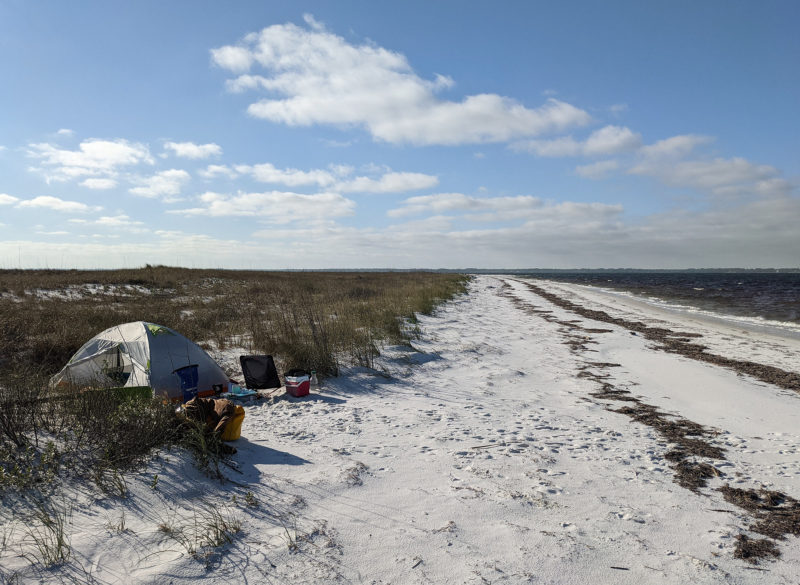
At the second campsite, I tucked the tent in a little swale on a Dog Island West beach to keep it out of the wind. The sun had returned, but I could feel the temperature dropping fast. The point that separates Shipping Cove from East Pass can be seen at the far end of the beach, and the mainland lies about 3-1/3 miles away across St. George Sound.
That evening I was grateful for the well-protected campsite: I was out of the wind again and even a bit warmer than the previous evening. I burned the last of the firewood in a sandy hollow and watched as the sun cast beams of pinks and reds as it set. The stars unfolded once again across the sky, I picked out Vega, the Big and Little Dipper, Cassiopeia, Orion, and Castor and Pollux while the half-moon rose over the eastern horizon.
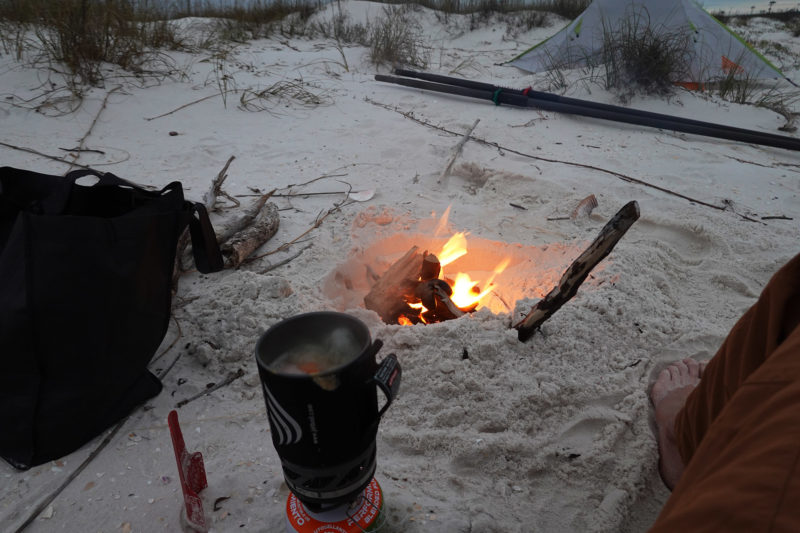
With dinner cooking on the camp stove, I soaked up warmth from the fire. After the sun set, the cloudless sky glowed an electric blue.
By sunrise, the wind was churning out of the east, and some waves were spiking tall enough that spume was blowing off their tops. The homeward leg to Carrabelle would be on a north by east heading, cutting across the easterly wind.
I struck camp slowly, as slowly as I could to wait out the wind and extend the time I could spend on the island. After a short row from my camp on the East Pass shoreline to northwest point of Dog Island West, I beached the boat and wandered up the dunes to see the crossing better. The higher vantage point revealed whitecaps, spume, and steep, short-troughed waves. I kicked around the sand dunes, wandered the beach, lay in the lee of 3′-high dunes, and soaked up the sun’s warmth, and waited. And waited. The weather continued to batter the sound. It may have been my imagination that it was getting better, but before the overcast sky became any darker, I double-checked the hatch covers, secured my gear in the cockpit, checked the rowing rig, tugged the straps on my PFD tight, and launched into the soup.
It not only looked miserable, it was miserable. Short, steep waves stopped the boat in its tracks. The largest swept over the boat. But I found that I could crab across the wind and waves just as well as row against the wind. Little by little, I made progress. The cockpit was swimming in seawater. I lost way too much ground each time I stopped to bail, but it had to be done or the volume of water sloshing in the cockpit would make the boat unstable. But I could put the oar handles under my knees with the oar blades just under the water to keep the boat secure and stable and free my hands for bailing.
Back at rowing, a little progress turned into more. And then a little more. When I had time to look, I was halfway across the sound. As I got closer to the mainland, the waves flattened out a bit and the wind eased. Hot from the exertion of rowing, I peeled off my knit hat and tossed it into the bottom of the boat. Dog Island grew more distant with each stroke of the oars and all but vanished when I rowed into the river mouth at Carrabelle.
This trip, as I had imagined it, didn’t have two and a half days of rain. It didn’t have five days of wind over 15 knots, or temperatures dipping to low 40s and even the upper 30s. I didn’t row nearly as many miles as I had imagined, ran into a pole, and bent up the outrigger. I met no one, but the sun, moon, and stars, the sand and the sea kept me company, and I returned to the Carrabelle boat ramp feeling every bit as renewed as I had hoped I would be. ![]()
Bill Hutton has been building, sailing, rowing, paddling, and driving small boats since he and his brother and father couldn’t get one of their “winter build boats” out of the basement one spring without taking out the double door and frame. In his 20s, he thought he was going to sail around the world in the BOC sailing race. That never came to pass, but he did sail solo from Elfin Cove, Alaska, to Victoria, B.C., nonstop, for practice. Over the years, in addition to small boats, he worked with mostly Native Alaskan students in Alaska schools, fished commercially for halibut and salmon, walked the mountains, ran some rivers, bicycled multi-day routes, and enjoyed adventures with his wife and family. He now lives in Florida for most of the year.
If you have an interesting story to tell about your adventures with a small boat, please email us a brief outline and a few photos.
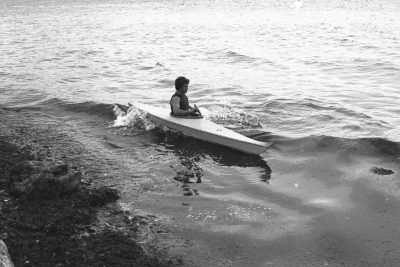
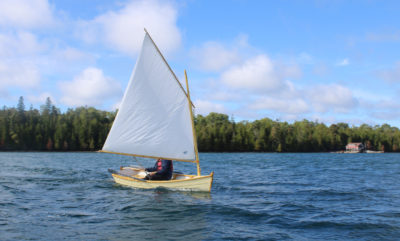
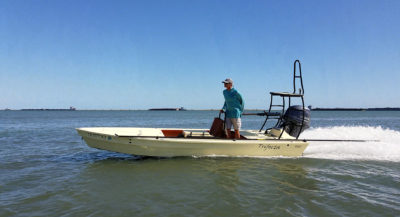
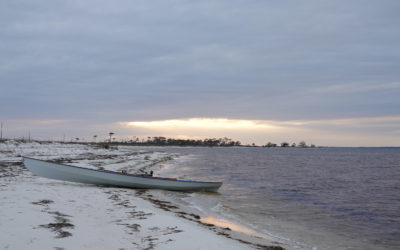
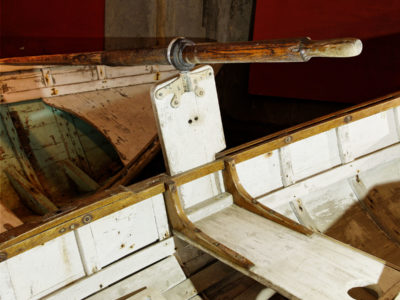
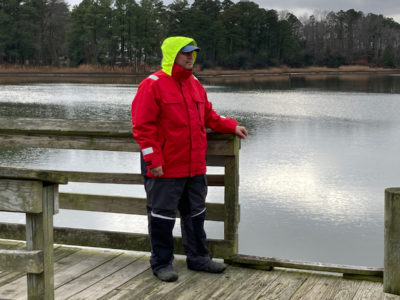
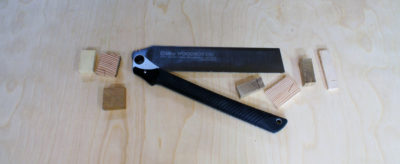


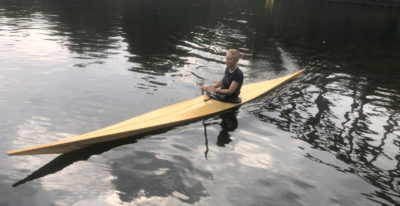
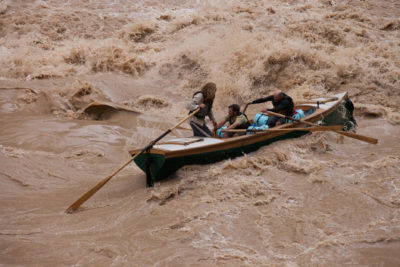
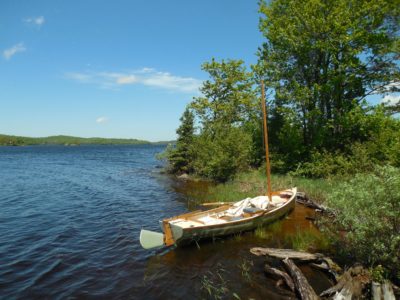
Bill,
I spent two Januarys on Dog Island in college 30 some years ago. Your story brought me back to those sand beaches, dunes, and marshes. I very much hope to get back there some day in person. But for today, your words are enough.
Thank you,
Paul
Thank you! It’s a unique place. By accident, I was talking to a neighbor’s son who had also gone there as a teenager about the same time as you. He described the house on the bluff overlooking the Gulf – but due to Irma, it’s not there now. I think I have a photo of the house – a pile of old building materials at the bottom of the bluff.
Cheers!
Bill
I enjoyed reading this, Bill. My wife and I love visiting Florida’s Forgotten Coast, so being able to see it through someone else’s eyes–especially from the point of view of a small boat–is always rewarding. Thank you for sharing.
Thank you! I really appreciate the comment. Interestingly, your article “Sunday Pass” inspired me to both do the trip and the writing – simple and fun. As I told Chris from the beginning, “I’m an amateur writer!” Poor guy, he stayed with me and I probably used up 90% of his time. I’ve always been interested in Padre Island and environs. Not sure if I’ll ever get there or not. As you say, there’s also lots more to explore on FL’s Forgotten Coast.
Cheers!
Nice story. I went to FSU and so took several trips to the beaches on St. George. Never occurred to me to take a kayak and paddle to explore this island. Oh well, maybe one day I will get back there.
Thanks for the story, Bill!
Never been to Florida, with or without a boat, and am not likely to, but the story of your little adventure brings it to life for me.